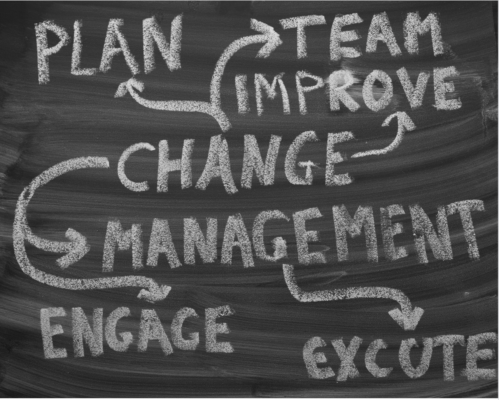How to Plan for Change In the Workplace
Organizational change comes in all shapes and sizes. Sometimes, it looks like layoffs. Other times, it might look like a merger, a reorganization, or onboarding a new company-wide technology. If the past few years have taught us anything, it’s that having a good change management plan could be the difference between surviving and thriving.
Find out how to build an effective change management strategy, including how to plan for change risk and how to leverage effective communication to make that strategy go further.
We’ve already covered when to roll out a change management plan, how to activate it without hurting company culture, and how to build a successful strategy.
We’re going to continue to help you prepare, and along the way, we’ll introduce you to three change management experts who can help you form your strategy.
Prepare the Company for a Change Management Plan
To ensure the success of a change management process, you will need buy-in from every level of the organization. To encourage adoption and reduce resistance, it’s critical to clarify your “why” so that employees know why the change is necessary.
Defining your “why” is all about articulating how current processes are no longer helping the company achieve desired results, or how external factors are forcing the company’s hand.
It might be helpful to gather data around those inefficiencies to help tell the story of why the old model no longer works. Data can come in the form of customer surveys, employee surveys, HR analytics, financial numbers, and more.
During the preparation phase, managers and other company leaders should take that data and help employees recognize the need for change. At this stage, they’re tasked with raising awareness around the various challenges or problems facing the business that are causing dissatisfaction and causing the coming change.
Define Goals and Create a Change Management Plan
Once you’ve identified your “why” and you can clearly articulate what pain points the change will solve, it’s time to build a rollout plan. According to Harvard Business School experts, that plan should detail the following:
- Strategic goals: what goals does this change help the organization work toward?
- Key performance indicators: how will success be measured? What metrics need to be moved? What’s the baseline for how things currently stand?
- Project stakeholders and team: who will oversee the task of implementing change? Who needs to sign off at each critical stage? Who will be responsible for implementation?
- Project scope: what discrete steps and actions will the project include? What falls outside of the project scope? How will we communicate at each planning stage to ensure effective implementation?
While it’s critical to have a structured plan as a single source of truth, your change management strategy should also have built-in flexibility that accounts for any potential obstacles or unknowns that arise during the implementation process. Agility is the key to any good change management plan.
Implement the Change
Once the strategy is built, it’s time to activate each step of the change management plan as it’s outlined.
Most quality change management programs start out by testing a new change, workflow, or process on a selected subgroup before rolling it out to the entire company. The testing stage can help you identify questions you haven’t thought of before and allows you to rectify issues before rolling it out company-wide.
During the implementation process, project stakeholders (tasked with ensuring successful implementation) should focus on helping employees take the necessary steps to achieve the goals of the initiative, celebrating any wins along the way. Managers, HR leaders, and other project stakeholders should repeatedly communicate the organization’s vision for change to keep the team motivated and on track.
Review Progress, Analyze, and Adapt Your Change Management Plan
The best change management plans have built-in goals and metrics for a reason: the company can better manage through change in the future.
Conducting analysis and review, or a “project post mortem,” can help business leaders understand whether a change initiative was a success, failure, or mixed result. These findings will provide insights and lessons that can inform and improve future change management exercises.
To hear from experts on how to implement this in your organization, follow the links below:







